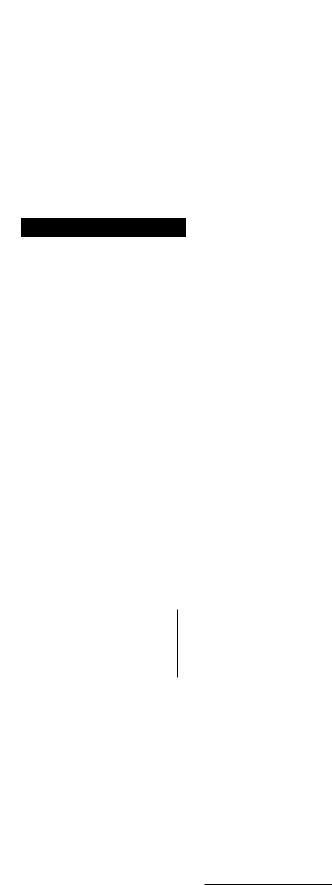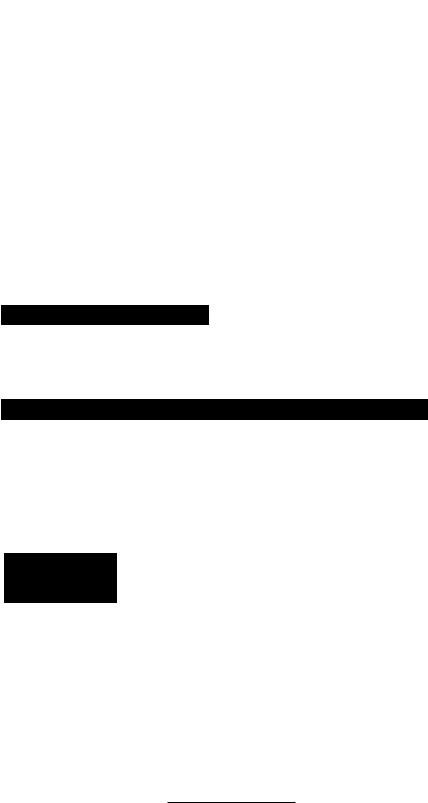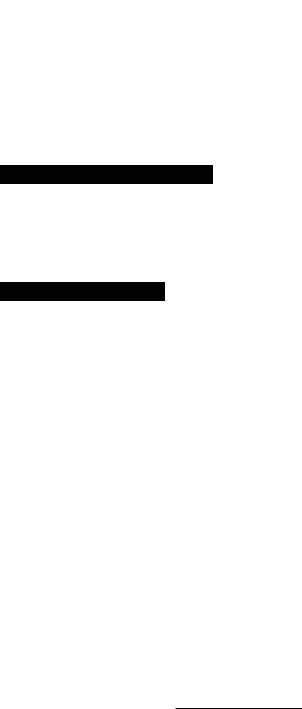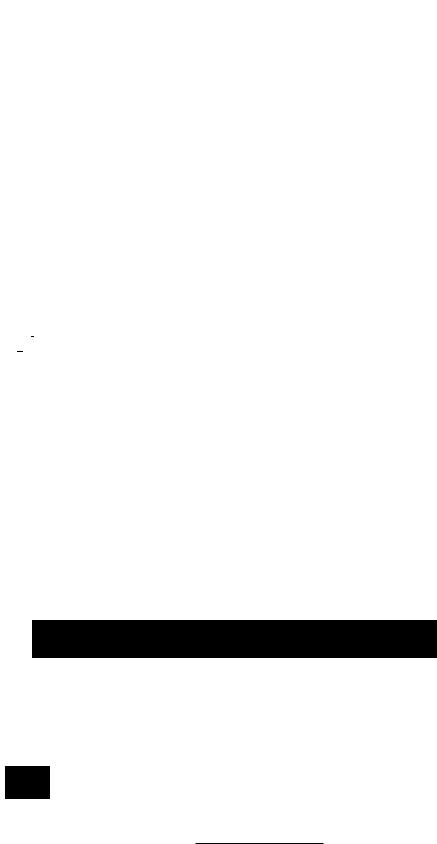
CFA Level 1 (2009) - 5
.pdf
StuJy Session 16
Cross-Reference to CFA Institute Assigned Reading #65 - Yield Measures, Spot Rates, and Fprward Rates
This may seem like an odd way (Q ger rhe spread, bur ir makes sense when you see how rhe l.ero-volatility spread, or sraric spread, is calculated. The zero-volatility spread (Z-spread) is rhe equal amount thar we must add (Q each rate on rhe Treasury spot yield curve in order to make rhe presenr value of rhe risky bond's cash Haws eljual (0 its market price. Insread of measuring rhe spread to YTM, rhe zero-volariliry spread measures rhe spread to Treasury spar rares necessary to produce a spot rare curve thar "correctly" prices a risky bond (i.e., produces irs marker price).
For a risky bond, the value obrained from discouIHing the expected cash flows ar Treasury spot rates will be roo high because rhe Treasury spor rares are lower rhan those appropriate for a risky bond. In order to value it correctly, we have to increase each
of rhe Treasury spor rates by some equal amounr so thar the present value of rhe risky bond's cash flows discounred ar the (increased) spot rarcs equals the market value of rhe bond. The following example will illustrate rhe process for calculating the Z-spread.
Example: Zero-volatility spread
1-,2-, and 3-year spot rares on Treasuries are 4%,8.167%, and 12.377%, respectively. Consider a 3-year, 9% annual coupon corporate bond trading at 89.464. The YTM is 13.50% and the YTM of a 3-year Treasury is 12%. Compute the nominal spread and
the zero-volatility spread of the corporate bond. |
. |
Answer: |
|
The nominaL spread is: |
|
nominal spread =YTM Bond - YTMTreasury = 13.50 - 12.00 = 1.50%.
To compute the Z-spread, set the present value of the bond's cash flows equal to to day's market price. Discount each cash flow at the appropriate zero-coupon bond spot rate pLus a fixed spread equals Z5. 50lve for Z5 in the following equation and you have the Z-spread:
89.464 = |
9 |
+ |
9 |
+ |
109 |
+ Z5)1 |
(1.08167 + Z5)2 |
==? |
|||
(1.04 |
|
|
(1.12377 + z5f |
Z5 = 1.67% or 167 basis points
Note that rhis spread is found by trial-and-error. In other words, pick a number "Z5," plug it into the right-hand side of the equation, and see if the result equals 89.464. If the right-hand side equals the left, then you have found the Z-spread. If not, pick another "Z5" and start over.
Professor's Note: This is not a caLcuLation you are expected to make; this exampLe is to heLp you understand how a Z-spread differs from a nominaL spread.
Page 112 |
©2008 Kaplan Schweser |

Study Session I (j Cross-Reference to CFA Institute Assigned Reading #65 - Yield Measures, Spot Rates, and Forward Rates
There arc two primary fanors that inHuence the difference between the nominal spread and the Z-spread for a security.
•The steeper the benchmark spot rate curve, the greater the difference between the two spread measures. There is no difference between the nominal and Z-spread when the spot yield curve is flat. If the sPOt yield curve is upward sloping, the Z-spread is larger than the nominal spread. The Z-spread is less than the nominal spread when the spot yield curve is negatively sloped.
•The earlier bond principal is paid, the greater the difference between the two spread measures. For a given positively sloped yield curve, an amortizing security, such as
an MBS, will have a greater difference between its Z-spread and nominal spread than a coupon bond will.
The option-adjusted spread (OAS) measure is used when a bond has embedded options. A calbble bond, for example, must have a greater yield than an identical option-free bond, and a greHer nominal spread or Z-spread. Without accounting for the value of the options, these spread measures will suggest the bond is a great value when, in fact, the additional yield is compensation for call risk. Loosely speaking, the option-adjusted spread takes the option yield component Out of the Z-spread measure; the optionadjusted spread is the spread to the Treasury spot rate curve that the bond would have if it were option-free. The OAS is the spread for non-option characteristics like credit risk, liquidity risk, and interest rate risk.
~ProfeJJors Note: The actual method o/calculation is r~served for Level2; for our
~~pmposes, however, Illl undentandll7g 0/ what the OA5 tJ wtfl bc mJJiclcnt.
LOS 65.g: Describe how the option-adjusted spread accounts for the option cost in a hond with an embedded option.
If we calculate an option-adjusted spread for a callable bond, it wilJ be less than the bond's Z-spread. The difference is the extra yield required to compensate for the call option. Calling that extra yield the option cost, we can write:
Z-spread - OAS = option cost in percent
Example: Cost of an embedded option'
Suppose you learn that a bond is callahle and has an GAS of 135bp. You also know that similar bonds have a Z-spread of 167basis points. Compute the cost of the embedded option.
Answer:
The option cost = Z-spread - OAS = 167 - 135 = 32 basis points.
©2008 Kaplan Schweser |
Page 113 |

Srudy Session 16
Cross-Reference to CFA Institute Assigned Readi.ng #65 - Yield Measures, Spot Rates, and Forward Rates
For embedded shorr calls (e.g., callable bonds): option cost> O.(you receive compens:llion for writing the option to the issuer) --; OAS < Z-spread. In other words, you require more yield on tiJe callable bond than for an bond.
For embedded puts (e.g., putable bonds), option cost < 0 (i.e., you must pay for the option) --> GAS> Z-spread. In other words, you require len yield all the pll table bond than for an 0IHion-free bond.
LOS 65.h: Explain a forward rate, and compute spot rates from forward rates, forward rates from spot rates, and the value (If a bond using forward rates.
A forward rate is a borrowingllending rate for a loan to be made :It some future date. 'T"hc notation used must identify both the length of the lending/borrowing period and when in tht> future the money will be loaned/borrowed. Thus, /1 is the rate for a I-year loan one year from now and /2 is the rare for a I-year loan to be made two years from now, and so on. Rather than introduce a separate noration, we can represent the current I-ycar rare as /0' To gcr tlie present values of a bond's expected cash flows, we nced to discount each cash flow by the forward rates for each of rhe periods until it is received. (The presenr value of $1 to be received in period n, discoun ted by the forward rates for periods I to 11, is called the forward discount factor for period 11.)
The Relationship Between Short-Term Forward Rates and Spot Rates
The idea here is that borrowingfor three years at the 3-year rate or borrowingjor I-yetlr periods, thrre years ill succession, should have the same cost.
This relation is illustrared as (I + S3)3 = (1 + /2) and the reverse as
S3 = [(1 + /0)(1 + /1)(1 + /2)] 113 - 1, which is the geometric mean we covered the
Study Session on Quantitative Methods.
Example: Computing spot rates from forward rates |
|
If the current I-year rate is 2%, theJ -year forward rate. (I f l) |
is 3% and the 2-year |
forwardnite (lf2) is4%,what'is the 3-yearsporrate? |
.. |
Answer: |
|
S3 = [(l.02)(1.()3)(l.04)] 1/3 -1 ~2.997% |
|
This can be interpreted to mean that a dollar compounded at 2.997% for three years would produce the sameending value as a dollar that earns compound interest of2% the first year, 3% the next year, and 4% for the third-year..
Page 114 |
©2008 Kaplan Schweser |

Swdy Session I () Cross-Reference to CFA Institute Assigned Reading #65 - Yield Measures, Spot Rates, and Forward Rates
Proftssor's Note: You can get ([ VelY good approximation ofthe 3-ye(/r spot S·([tt' with the simple Irverage of the forward mtes. 1/1 the previotlS t'xtlltlple we got
2.997% find the simple (lVertlgt' o/the t{m'e mlflual rates is ~l- 3-±-~_ ,ce.: 3%>.
3
Forward Rates Given Spot Rates
We can lise the same relationship we used (() calculate spar rates from forward rates (Q calculate forward rates from spot rates.
Our basic relation bcrween forward rates and spor rates (for twO periods) is:
Which, again, tells us that an investmenr has the same expecred yield (borrowing has rhe same expected cost) whether we invest (borrow) for two periods at rhe 2-period spor rate, 52'or for one period ar the currenr rate, 51'and for rhe next period at rhe expected forward rate, /j'Clearly, given two of these rates, we can solve for the other.
Example: Computing a forward rate from spot rates
The 2-period spot rate, 52, is 8% and the current I-period (spot) rate is 4% (this is both
51 and /0)' Calculate the forward rate for one period, one period from now, /,.
Answer:
The following figure illustrates the problem.
Finding a Forward Rate
|
|
|
2-year bond (52 = 8.0%) |
|||
|
|
|
-----------~---... |
|
|
|
|
|
|||||
|
|
|
|
|
||
|
|
l<illo(r------------i~~I_<{_- --- j; - |
|
|
||
|
|
I-year bond (today) |
1 yen howl |
|
|
|
|
|
(5\ = 4.000%) |
(one yea!" from [()l!av)IJ, ;) |
|
|
|
|
|
|
|
|
|
|
o |
2 |
|||||
©2008 Kaplan Schwcser |
Page I I'j |

Study Session 16
Cross-Reference to CFA Institute Assigned Reading #65 - Yield Measures, Spot Rates, and Forward Rates
Fromouroriginaleqdlity,(l +S2)2=(I +Sl)(l + JI),wecanget (1+S2)2 -1= f
(1+SI) 11
or, since we know that both choices have the same payoff in t.wo years:
(1 + |
f) = |
(1.08)2 |
|
|
|
I |
I |
(1.04) |
|
|
|
" - |
(1.08)2 |
_ |
1.1664 - 2 |
5401 |
|
I fI - |
--- -1 - -- - 1 - 1.1 |
70 |
|||
|
(1.04) |
|
1.04 |
|
|
In other words, investors are willing to accept 4.0% on the I-year bond today (when they could get 8.0% on the 2-year bond today) only because they can get 12.154% on a I-year bond one year from today. This future rate that can be locked in today is a fOrward rate.
Similarly, we can back other forward rates out of the spot rates. We know that:
And that:
This last equation says that investing for three years at the 3-year spot rate should produce the same ending value as investing for two years at the 2-year spot rate and then for a third year at /2' the I-year forward rate, two years from now.
Solving for the forward rate, If2, we get:
Page 116 |
©2008 Kaplan Schwcser |

Study Session 16 Cross-Reference to CFA Institute Assigned Reading #65 - Yield Measures, Spot Rates, and Forward Rates
Example: Forward rates from spot rates
Let's extend the previous example to three periods. The current I-year spot rate is 4.0%, the current 2-year spot rate is 8.0%, and the current 3-year spot rate is 12.0%. Calculate the I-year forward rates one and two years from now.
Answer:
We know the following relation must hold:
We can use it to solve for the I-year forward rate one year from now:
2 |
_ |
(l.08)2 |
(1.08) |
=(1.04)(1+ 1fd,solt l = |
( )-1=12.154% |
|
|
1.04 |
We also know that the relations:
and, equivalently (1 + 53)3 = (1 + 52)2(1 + /2) must hold. 5ubstituting values for 53 and 52' we have:
so that the I-year forward rate two years from now is:
1f2 = |
(1.12)3 |
= 20.45% |
2 -1 |
||
|
(1.08) |
|
To verify these results, we can check our relations by calculating:
53 = [1(1.04)(1.12154)(1.2045)] [/3 - 1= 12.00%
This may all seem a bit complicated, but the basic relation, that borrowing for successive periods at I-period rates should have the same cost as borrowing at muItiperiod spot rates, can be summed up as:
(l + 5 2)2 = (1 + 5 1)(1 + /1) for two periods, and (1 + 5 3)3 = (1 + 52)2(1 + /2) for three periods.
©2008 Kaplan Schweser |
Page 117 |

Study Session 16
Cross-Reference to Cl'"A Institute Assigned Reading #65 - Yield Measures, Spot Rates, and Forward Rates
ProfeHor's Note: Simple averages also give dt'cmt approximations jor calculating fOrward mtes from spot rates. In the above example, we had spot rates of4% jor aIll' year and 8% fOr tlUO years. Two years at 8% is 16%, so ifthe fint year rate is 4%, the second year rate iI dose to 16 - 4 == 12% (actual is 12.154). GirJerI a 2-year spot rate of8% and tl 3-year spot rate of 12%, we could approximate ,he 1-y£'ar fOrward rate from time two to time three as (3 x 12)- (2 x 8) '" 20. If;,!t m,~)' be dost' !'IlOugh (actual is 20.15) to amwa t1 lIJultiple choice questioll
(/lid, in tillY ["flJ(', st'rl't's as a good chnk to mal,e sur£' th(' t'xacl mtt' yo II Cfllculatf is remollable.
We can also calculare implied forward rares for loans for more rhan one period. Given spar rares of: l-ycar '" 5%, l-year '" 6%, 3-year '= 7%), and 4-year == 8%, we can calculare
l2'
The implied liHward rarc on a l-year loan (WO years from now is:
|
(1 + S4 )'j |
1. |
|
1 084 ]1/2 |
|||
|
2 |
|
|||||
|
---- |
|
-1= |
[ 1~062 |
-1 == 10.04%. |
||
|
(1 + 52)2 |
|
|||||
|
|
|
|
|
|||
~.'.'..-..,.~ |
|
ProftJwr:r Note: The approximation works fOr multi-period fOrward rates as well |
|||||
• |
Here we have |
(4 x 8 - |
6 xl) = 10. The difference betweert two years at 6% and |
||||
|
|
|
|
|
1 |
|
|
. |
|
if |
|
|
|
|
|
U |
jour years at 8% is approximately 20%. Since that is fOr two years, we divide by |
||||||
:..:"" |
|
||||||
two to get an annual rate ofapproximately 10%.
Valuing a Bond Using Forward Rates
Example: Computing a bond value using forward rates
The current I-year rate (1 fo) is 4% and the I-year forward rate for lending from time == 1 to time == 1 is 1f J == 5%, and the I-year forward rate for lending from time == 2 to time == 3 is /2 == 6%. Value a 3-year annual-pay bond with a 5% coupon and a par value of $1,000.
Answer:
~+ 50 + 1,050 =$1,000.98
1.04(1.04)(1.05) (1.04)(1.05)(1.06)
Proftssor'I Note: Ifyou think this looks a little like valuing a bond using spot rates, as we did fOr arbitrage-fiee valuation, you are right. The discount facton are equivalent to spot rate discount jactors.
Page 118 |
©2008 Kaplan Schweser |

Study Session 1G Cross-Reference to CFA Institute Assigned Reading #65 - Yield Measures, Spot Rates, and Forward Rates
]4. |
The ·/.cro-voJatility spread will be zero: |
|
||
|
A. |
if thc yidd curve is Hat. |
I |
|
|
B. for a f.no-coupon |
bond. |
|
|
|
C. |
for an on-the-run |
Treasury bond. |
|
] 5. Assume the Treasury spot-rate yield curve is upward sloping. Compared to the nOJ1lin~d yield spread hnween a Treasury bond and an option-free corpurate bond of similar matllrity, the ~-sprcad will he:
A.greater than the nominal spread.
B.Jess than the nominal spread.
C. equal to the nominal spread.
]. |
An investor buys a la-year, 7% coupon, semiannual-pay hand for \)2.130. He |
|
sdts it three years later, just after receiving the sixth coupon payment, when its |
|
yield to maturity is 6.9%. Coupon interest has been placed in an account that |
|
yields 5% (BEY). Slate the sources of return on this bond, and calculate the |
|
doll:u return from each source based on a $100,000 bond. |
2.What is the yield on a bond equivalent basis of an annual-pay 7% coupon bond priced at par?
3.What is the annual-pay yield to maturity of a 7% coupon semi-annual pay bond?
4.The yield to maturity on a bond equivalent b:lsis on I)-month and] -year T-bills
are 2.8% and 3.2%, respectively. A ] .S-year, 4°/cl Treasury nOle is selling al par.
A.What is the] 8-monrh Treasury spot rate?
B. If a 1.S-year corporale bond with a 7% coupon is selling for 102.395, what is the nominal spread for this bond? Is the zero-volatility spread (in basis points) 127, 130, or 133?
5.Assume the following spot rales (as BEYs).
Years to maturity |
Spot rates |
|||
|
|
|
4.0% |
|
0.5 |
|
|||
1.0 |
|
4.4% |
||
1.5 |
|
5.0% |
||
2.0 |
|
5.4% |
||
|
|
|
|
|
A.What is the I)-month forward rate one year from now?
B.What is the I-year forward rate one year fr0111 now?
C. What is the value of a 2-year, 4.5% coupon Treasury note?
©2008 Kaplan Schweser |
Page 123 |

Study Session 16
Cross-Rcfercnce to CFA Institute Assigned Reading #65 - Yield Measures, Spot Rates, and Forward Rates
G.Assume the current G-month rate is 3.5% and the G-month forward rates (all as BEYs) are those in the following table.
|
|
|
Periods Fro/l/ Now |
Forward Raft's |
||
|
|
|
|
|
|
|
|
|
|
|
3.8% |
|
|
|
|
|
2 |
4.0% |
|
|
|
|
|
|
4.4% |
|
|
|
|
|
4 |
4.8% |
|
|
|
|
|
|
|||
|
A. Calculate the corresponding spot rates. |
|||||
|
B. |
What is the value of a 1. 5-year, 4% Treasury note? |
||||
7. |
Consider the following three bonds that all have par values of $1 00,000. |
|||||
|
|
|
I. A 1O-year z.ero coupon bond priced at 48.20. |
|||
|
|
II. A 5-year 8% semiannual-pay bond priced with a YTM of8%. |
||||
|
III. A 5-year 9% semiannual-pay bond priced with a YTM of8%. |
|||||
|
A. What is the dollar amount of reinvestment income that must be earned on |
|||||
|
|
|
each bond if it is held to maturity and the investor is to realize the current |
|||
|
|
|
YTM? |
|
|
|
|
B. |
Rank the three bonds in terms of how important reinvestment income is to |
||||
|
|
|
an investor who wishes to realize the stated YTM of the bond at purchase by |
|||
|
|
|
holding it to maturity. |
|
|
|
Page 124 |
©2008 Kaplan Schweser |

Study Session 16 Cross-Reference to CroA Institute Assigned Reading #65 - Yield Measures, Spot Rates, and Forward Rates
;-¥.,- '\t. ' . ', ' . • •
:,'Jw:YCONCEPTS |
|
. |
|
t': . |
. , . ' . |
' |
. |
J os ()).a
Three sources of retllrn (0 a coupon bond:
Coupon inrcrest paymenrs.
Reinvl>stmenr income on the coupon cash Oows.
Capital gain or loss on the principal valuC'.
l.OS ()).b
Yield to maturity (YTM) for a semiannual-pay coupon bond is calculated as two times rhe semiannual discount rate thar makes the presenr value of the bond's promised cash llows equal to its nrarket price plus accrued interest. For an annual-pay coupon bond, the YTM is simply the annual discoulH rate that makes the preselH value of the bond's promised cash Bows equal to its market price plus accrued interest.
The current yield for a bond is its annual ilHnest payment divided by its nurket prine.
Yield to call (put) is calculatcd as a YTM but with the number of periods until the call (put) and the call (put) price substituted for the number of periods to maturity and the maturity value.
The cash How yield is a monthly internal rate of return based on a presumed prepayment rate and the current market price of a mongage-backed or asset-backed security.
! OS ()'1c
YT'M is not the rCllized yield on an investment unless the reinvestment ratc is equal to the YTM.
The amount of reinvestment income required to generate the YTM over a bond's life is the difference between the purchase price of the bond, compounded at the YTM until maturity, and the sum of the bond's interest and principal cash Rows.
Reinvestment risk is higher when the coupon rate is greater (maturity held constant) and when the bond has longer maturity (coupon rate held constant).
LOS 65.d
The bond-equivalent yield of an annual-pay bond is:
BEY = [ J(1 + annual-pay YTM) -1] x 2
The annual-pay yield can be calculated from the YTM of a semiannual-pay bond as:
( |
semiannual-pay YTM)2 |
-1 |
EAY=ll+ |
2 |
©2008 Kaplan Schwescr |
Page 1 19 |
